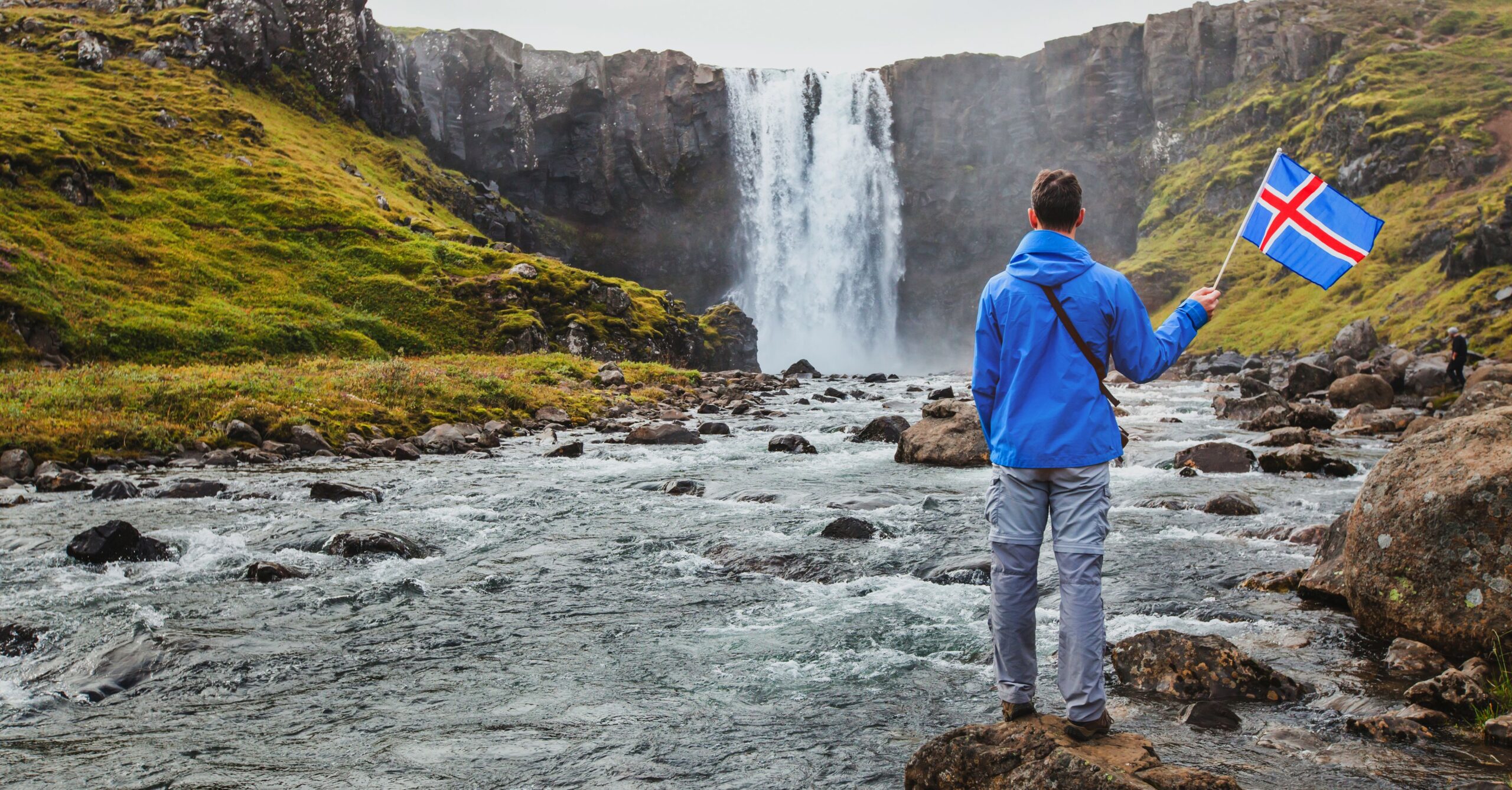TRAVEL
The Cultural Tapestry of Language in Travel: Exploring Iceland’s Linguistic Heritage

Key Takeaways:
- Embracing the Icelandic language enriches travel experiences and cultural understanding.
- Iceland’s language and landscape are deeply interconnected, and learning the language offers a unique perspective on the country.
- Preserving the Icelandic language is critical to maintaining its cultural heritage, particularly in the face of globalization.
- Trying to learn and use Icelandic, even if only basic phrases, can foster closer connections with local communities.
Table of Contents:
- Introduction to the Importance of Local Languages in Travel
- The Magic of Icelandic: A Language of Fire and Ice
- Language and Landscape: How Icelandic Reflects the Natural World
- Icelandic Language Revival: Efforts to Preserve Linguistic Heritage
- Learning Icelandic: Tips for Beginners
- Communicating in Iceland: Beyond the Basics
- Closing Thoughts: The Personal Enrichment of Learning New Languages
Introduction to the Importance of Local Languages in Travel
Embarking on a journey traverses much more than geographical distances; it’s a leap into the diverse linguistic landscapes that shape our world’s cultures. In the realm of travel, words are potent—they possess the power to open doors to authentic local experiences and foster human connections that resonate long after one has returned home. The enchanting Icelandic language, with its evocative sounds reminiscent of Iceland’s bubbling geysers and cascading waterfalls, provides a perfect example of how language can be the key that unlocks the essence of a place. Delving into the local dialects while traveling allows us to taste a locale’s authentic flavor. In Iceland, it offers a deeper appreciation of its sagas, songs, and the soul of its people.
By learning the language of the land, travelers open themselves up to experiences inaccessible to those who don’t venture beyond the safety net of global lingua francas like English. Speaking in the local tongue signals respect and a genuine interest in the culture that can transform convenience-based interactions into opportunities for cultural insight. Hailing a taxi, ordering a meal, or simply greeting a passerby with a ‘halló’ (hello) can greatly enrich travel experiences. Language is the lifeblood of culture, and when we take the time to learn and engage with it, our travel experiences become more fulfilling and respectful of the communities we visit.
The Magic of Icelandic: A Language of Fire and Ice
Icelandic, a North Germanic language spoken by around 340,000 people, radiates a charm attributed to its preserved medieval qualities. One might liken Icelandic to a living museum exhibit. This meticulously preserved relic allows for reading ancient Norse sagas in their original form, like a time traveler whisking us back to the age of Vikings. Its unique vocalic harmonies and intricate verb conjugations are like the complex patterns of snowflakes, embodying the wintry landscapes that define much of the country’s scenery. On the currents of its linguistic flow, the fascination for the Icelandic language carries a musicality that echoes through the geothermal valleys and the Northern Lights-streaked skies of Iceland. Known for its resistance to outside linguistic influences, it is a language that proudly retains its identity, setting an example for linguistic purity in an age where many languages have succumbed to homogenization.
However, Icelandic is by no means frozen in time. It has evolved practical modernizations, creating new words from its rich stock of morphemes to adapt to today’s digital and technological advances. Where some languages might borrow terms like ‘computer’ or ‘internet,’ Icelandic forges its path with ‘tölva’ (a fusion of words meaning ‘number’ and ‘prophetess’) and ‘net’ (simply meaning ‘net’), respectively. This creative ingenuity imbues the language with novelty and relevance, even as it honors its past.
Language and Landscape: How Icelandic Reflects the Natural World
The rugged terrains of Iceland, characterized by thunderous waterfalls, black sand beaches, and spouting geysers, are inseparable from the language that was born from them. Like the land, Icelandic is stark and impactful, with the power to evoke vivid images through its profound descriptiveness. The lexicon of Icelandic hosts an array of bespoke terms explicitly designed to articulate the multitude of environmental features surrounding its speakers. For instance, words such as ‘jökull’ for glacier and ‘eldfjall’ for volcano designate these natural phenomena and capture the raw and unyielding spirit they represent. Learning these words as a traveler is akin to gaining a new lens through which to witness and appreciate the stark beauty of the Icelandic terrain—a counterpart to the visual splendor with an auditory richness that completes the sensory experience of Iceland.
Indeed, the language offers a map of the heart of Iceland’s natural majesty. Alongside the visual awe inspired by the Gullfoss waterfall or the grandeur of the Thingvellir National Park, understanding place names and the language adds another dimension, painting a comprehensive picture of the Icelandic realm. When one knows that ‘Thingvellir’ means ‘assembly plains,’ suddenly, the historical significance of the site of Iceland’s ancient parliament, the Alþingi, emerges alongside its aesthetic appeal.
Icelandic Language Revival: Efforts to Preserve Linguistic Heritage
In a world where cultural homogenization is ever-present, the plight to protect and revitalize the Icelandic language represents a broader struggle for linguistic diversity. As the digital frontier expands, so does the preference for widely spoken languages, often to the detriment of smaller ones. Yet, Icelanders prove resilient, valiantly fostering initiatives that facilitate the growth and modernization of their mother tongue. School curricula emphasizing the importance of Icelandic literature and language, alongside government policies mandating its use in public institutions, embody the national ethos of cherishing and upholding this crucial aspect of their identity. Icelandic’s prominence in every facet of public life, from the media to technology, ensures its continued relevance and vitality.
One of the most illuminating examples of Iceland’s linguistic tenacity is the incorporation of technology to serve the needs of Icelandic speakers. While global tech giants often prioritize more widely spoken languages for their products and services, Icelanders have come forward to innovate and adapt these technologies to accommodate their language. From spell-checkers and keyboard layouts to fully functional digital assistants capable of understanding and speaking Icelandic, these advances highlight Iceland’s commitment to linguistic sustainability.
Learning Icelandic: Tips for Beginners
Although the prospect of learning a new language can be daunting, especially as historically rich and grammatically complex as Icelandic, the journey can be as rewarding as it is challenging. For travelers determined to connect with Iceland’s heritage through its language, ample resources make starting this adventure accessible. Engaging with online courses or language learning applications tailored to Icelandic can provide a structured approach to mastering the basics. Interactive tools and multimedia content can make this endeavor both fun and immersive. Beginners are encouraged to familiarize themselves with common phrases that can serve as a bridge to day-to-day communication, putting forth efforts to attune their ears to the distinct sounds of Icelandic speech through songs and spoken-word recordings. Tapping into the vibrant community of language learners can also serve as a motivational force, turning a solitary pursuit into a collaborative experience.
Communicating in Iceland: Beyond the Basics
While Iceland offers a gracious welcome to English-speaking visitors, immersing oneself in the basics of the Icelandic language can transform the journey. More than just a tool for navigating practicalities, using Icelandic, even minimally, can be a sign of respect and an open door to more prosperous, more authentic interactions. Whether engaging in small talk with a Reykjavik shopkeeper or seeking guidance from a ranger in Vatnajökull National Park, demonstrating an effort to speak Icelandic can spark delightful conversations and connections that might otherwise remain unestablished. Furthermore, these attempts at communication often lead to moments of shared laughter and heartwarming experiences that turn a trip into a truly memorable adventure.
Closing Thoughts: The Personal Enrichment of Learning New Languages
Learning a new language is an exciting endeavor that links the learner to a larger world, and this is especially true for languages like Icelandic, with its evocative energies and historical gravity. As travelers learn and use Icelandic, they’ll find that their efforts are met with expanding their worldviews, a deeper connection to the culture and its people, and a treasure trove of new stories to carry home. Ultimately, languages like Icelandic offer more than just a means of communication; they provide a bridge to understanding the heart of a country and its people, promising an ever-more rewarding travel experience.
TRAVEL
Why Stream East is the Perfect Destination for Nature Lovers

Welcome to Stream East, where nature’s beauty unfolds in all its glory. Nestled in a pristine location that beckons to the adventurous spirit within us all, this enchanting destination is a paradise for nature lovers seeking solace and serenity amidst breathtaking landscapes. Join us on a journey through the wonders of Stream East, where every moment spent in the embrace of Mother Nature feels like a timeless reverie.
The natural beauty of Stream East: national parks, hiking trails, wildlife
Nestled in the heart of Stream East lies a treasure trove of natural wonders waiting to be explored. The region boasts stunning national parks with vast expanses of lush forests, meandering rivers, and majestic mountains that leave visitors in awe.
Hiking enthusiasts will find themselves in paradise with an array of trails that cater to all skill levels. From leisurely strolls through serene valleys to challenging treks up rugged peaks, there’s something for everyone to enjoy.
Wildlife thrives in this pristine environment, offering nature lovers the chance to spot a variety of species in their natural habitat. Keep your eyes peeled for elusive birds, playful otters, and maybe even a glimpse of a majestic deer grazing peacefully.
Whether you’re looking to unwind amidst tranquil scenery or seek adventure off the beaten path, Stream East has it all. Immerse yourself in the beauty of nature and let its wonders rejuvenate your soul as you explore this captivating destination.
Unique activities for nature lovers: bird watching, camping, kayaking
Nestled in the heart of Stream East are a plethora of unique activities that cater to nature lovers seeking adventure and tranquility. Bird watching enthusiasts will be delighted by the diverse avian species that call this region home. From colorful songbirds to majestic birds of prey, the bird watching opportunities here are unparalleled.
For those craving an immersive outdoor experience, camping under the starlit sky is a must-do activity in Stream East. Imagine waking up to the sounds of nature surrounding you, with nothing but fresh air and serenity embracing your senses.
Kayaking along the winding rivers and tranquil lakes offers a peaceful way to explore the natural beauty of Stream East from a different perspective. Paddle through lush forests, spot wildlife along the shores, and feel at one with Mother Nature as you glide across pristine waters.
Whether you’re an avid birder, a seasoned camper, or a water sport enthusiast, Stream East beckons with its array of unique activities that promise unforgettable experiences for nature lovers.
Sustainable tourism in Stream East
Nestled in the heart of Stream East lies a commitment to sustainable tourism practices. The local community and businesses have joined forces to preserve the natural beauty of this pristine destination for future generations to enjoy.
From eco-friendly accommodations that blend harmoniously with the surroundings to responsible tour operators dedicated to minimizing their environmental impact, Stream East sets an example for sustainable travel. Visitors can immerse themselves in nature while treading lightly on the land, leaving only footprints behind.
By supporting local artisans and businesses, travelers contribute directly to the economic well-being of Stream East’s residents. This symbiotic relationship fosters a deeper connection between visitors and the destination, enriching experiences for all involved. Sustainable tourism isn’t just a trend here; it’s a way of life that enhances every aspect of exploring this breathtaking region.
Local culture and traditions of Stream East
Immerse yourself in the rich tapestry of local culture and traditions that make Stream East a truly unique destination for nature lovers. The community here takes pride in preserving its heritage, evident in vibrant festivals celebrating music, dance, and culinary delights passed down through generations.
The warm hospitality of the locals will make you feel like part of the family as you explore traditional crafts and artisanal products showcasing the region’s creativity. Don’t miss out on engaging with indigenous communities who generously share their knowledge of medicinal plants and ancient rituals that connect them to the land.
Experience firsthand the harmonious blend of modern influences with age-old customs that give Stream East its character and charm. Whether it’s joining a traditional cooking class or participating in a cultural ceremony, every moment spent immersing yourself in local traditions will leave an indelible mark on your heart.
Accommodations and dining options in Stream East
Nestled in the heart of nature, Stream East offers a variety of accommodations for every traveler’s preference. From cozy cabins to rustic camping sites, there is something for everyone looking to immerse themselves in the natural beauty of this destination.
For those seeking a touch of luxury, boutique eco-resorts provide a comfortable and sustainable stay without compromising on comfort. Wake up to stunning views of lush forests or serene lakes right outside your window.
Dining options in Stream East are just as diverse as its landscapes. Local eateries serve up delicious farm-to-table meals made with fresh ingredients sourced from nearby communities. Indulge in traditional dishes that reflect the rich culinary heritage of the region while supporting local businesses.
Whether you prefer dining al fresco under the stars or enjoying a cozy meal by a crackling fireplace, StreamEast has dining options that cater to every taste bud. Experience nature’s bounty through locally-sourced meals that will leave you craving more.
How to plan a trip to Stream East
Planning a trip to Stream East is an exciting adventure for nature enthusiasts. Start by researching the best time to visit, considering the seasons and weather patterns in the region. Next, create a flexible itinerary that allows you to explore the national parks, hiking trails, and wildlife at your own pace.
When packing for your trip, make sure to bring appropriate outdoor gear such as sturdy hiking boots, binoculars for bird watching, and camping equipment if you plan on staying overnight. Don’t forget essentials like sunscreen, insect repellent, and a reusable water bottle to stay hydrated while exploring.
Consider booking accommodations in advance to secure your stay in StreamEast. Whether you prefer cozy cabins or campsites under the stars, there are options available to suit every traveler’s needs. Additionally, research local dining establishments that offer fresh cuisine showcasing regional flavors.
Embrace sustainable travel practices during your trip by respecting nature and wildlife habitats. Leave no trace behind and support local conservation efforts to preserve the natural beauty of Stream East for future generations of nature lovers.
Conclusion: Why Stream East is a must-visit destination for nature lovers
Stream East stands out as a must-visit destination for nature lovers seeking an immersive experience in the great outdoors. With its stunning national parks, diverse wildlife, unique activities like bird watching and kayaking, commitment to sustainable tourism, rich local culture, comfortable accommodations, and delicious dining options; Stream East offers a perfect blend of natural beauty and adventure. Whether you are looking for a peaceful retreat or an active exploration of nature’s wonders, StreamEast has something special to offer every kind of nature enthusiast. Plan your trip to Stream East today and embark on an unforgettable journey into the heart of wilderness and tranquility!
TRAVEL
Journeys of Love: Where to Travel with Mom for Unforgettable Memories

Traveling with your mom can be an incredibly enriching and bonding experience. Whether you’re exploring new cultures, indulging in delicious cuisine, or simply enjoying each other’s company, the memories created on these journeys can last a lifetime.
In this blog post, we’ll explore some of the best destinations around the world for mother-daughter adventures, each offering its unique blend of culture, history, and natural beauty.
Paris, France: The City of Love
Paris is synonymous with romance, making it an ideal destination for a mother-daughter getaway. Stroll hand in hand along the Seine River, admire iconic landmarks like the Eiffel Tower and Notre Dame Cathedral, and indulge in decadent pastries at charming cafes. Don’t forget to explore world-class museums like the Louvre and Musée d’Orsay, where you can bond over art and history.
Kyoto, Japan: Serenity and Tradition
For a peaceful retreat steeped in tradition, Kyoto offers a perfect escape. Explore centuries-old temples and shrines nestled among lush bamboo forests, participate in a traditional tea ceremony, and wander through exquisite Japanese gardens. Kyoto’s rich cultural heritage provides ample opportunities for meaningful conversations and shared experiences with your mom.
Santorini, Greece: Island Paradise
With its stunning sunsets, white-washed buildings, and crystal-clear waters, Santorini is a dream destination for any mother-daughter duo. Spend your days soaking up the sun on beautiful beaches, exploring charming villages perched atop cliffs, and savoring fresh seafood at seaside tavernas. The breathtaking views and relaxed atmosphere create the perfect backdrop for quality time together.
Machu Picchu, Peru: A Journey Through History
Embark on an adventure of a lifetime with your mom by exploring the ancient ruins of Machu Picchu. Trek along the Inca Trail, marvel at the majestic Andean mountains and immerse yourselves in the fascinating history of the Incas. The sense of accomplishment and wonder you’ll experience together at this iconic archaeological site is truly unparalleled.
New York City, USA: The City That Never Sleeps
For an unforgettable urban adventure, head to the Big Apple with your mom. Take in a Broadway show, stroll through Central Park, and shop till you drop on Fifth Avenue. With its diverse neighborhoods, world-class dining, and endless entertainment options, New York City offers something for every taste and interest.
Florence, Italy: Renaissance Splendor
Step back in time to the Renaissance era with a visit to Florence, the cultural heart of Italy. Admire masterpieces by Michelangelo, Leonardo da Vinci, and Botticelli at the Uffizi Gallery, climb to the top of the Duomo for panoramic views of the city and savor authentic Tuscan cuisine at family-run trattorias. The timeless beauty and charm of Florence provide the perfect backdrop for a memorable mother-daughter trip.
Bali, Indonesia: Tropical Paradise
Escape to the tranquil island of Bali for a rejuvenating retreat with your mom. Relax on pristine beaches, explore lush rice terraces and tropical jungles, and immerse yourselves in the island’s rich spiritual heritage with visits to ancient temples and yoga retreats. Bali’s laid-back vibe and natural beauty make it an ideal destination for bonding and relaxation.
Cape Town, South Africa: A Blend of Cultures
Experience the vibrant diversity of South Africa with a trip to Cape Town. Explore the bustling markets of the Bo-Kaap neighborhood, hike to the top of Table Mountain for breathtaking views of the city, and embark on a safari to see the Big Five in their natural habitat. Cape Town’s rich history and stunning landscapes provide the perfect backdrop for an adventure-filled getaway with your mom.
Conclusion
Wherever you opt to venture with your mom, the paramount aspect is the chance to forge enduring memories together. Whether you’re uncovering ancient ruins, unwinding on tropical shores, or relishing delectable cuisine, the connection you both cherish will inevitably deepen as you set out on these heartfelt journeys. So, prepare your bags, seize the opportunity to gift her with a delightful Mother’s Day gift, and brace yourselves for the adventure of a lifetime!
-

 LOVE MESSAGES7 months ago
LOVE MESSAGES7 months agoSweet Love Messages for Her to Make Her Smile
-

 LOVE MESSAGES7 months ago
LOVE MESSAGES7 months ago100 Romantic Good Evening Messages For Her & Him
-

 LOVE MESSAGES7 months ago
LOVE MESSAGES7 months agoRomantic Love Messages For My Husband With Images
-

 LOVE MESSAGES7 months ago
LOVE MESSAGES7 months ago50 Just Checking on You Text Messages for Him & Her
-

 LOVE MESSAGES7 months ago
LOVE MESSAGES7 months agoSweet Love Messages For My Wife With Images
-

 LOVE MESSAGES7 months ago
LOVE MESSAGES7 months ago50 Cute Good Night Sweet Dreams Messages For Lovers
-

 LOVE MESSAGES7 months ago
LOVE MESSAGES7 months ago25 Romantic I Love You Messages for Her
-

 LOVE MESSAGES7 months ago
LOVE MESSAGES7 months agoLong Good Morning Messages to Make Her Fall in Love
